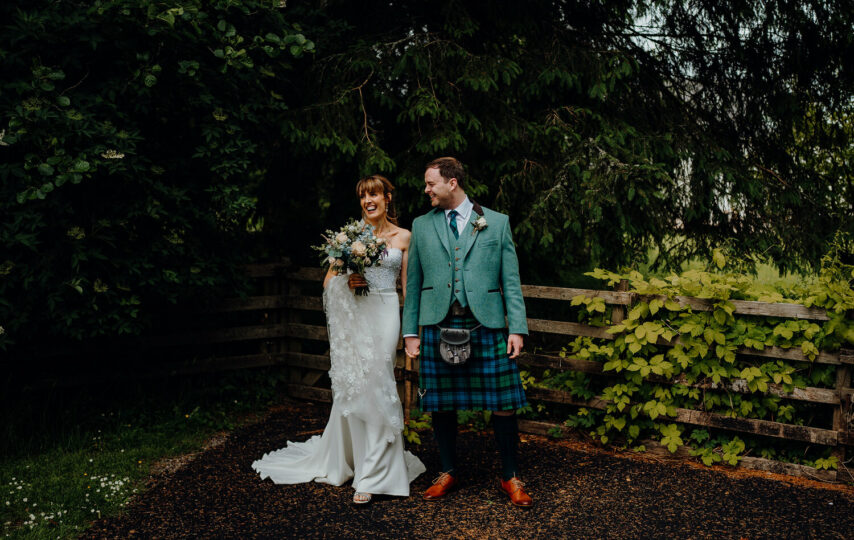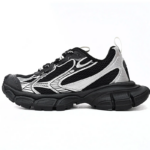Introduction:
Tartan kilts have long been associated with Scottish heritage and are renowned for their timeless elegance and cultural significance. Whether you’re attending a wedding or embracing your Irish roots, the wedding kilt and Irish kilt hold a special place in the world of fashion. In this comprehensive guide, we will delve into the history, significance, and styling tips for these iconic garments. Join us on a journey through time and tradition as we explore the allure of tartan kilts, their deep-rooted heritage, and their contemporary popularity.
Origins and Historical Significance of Tartan Kilts
Tartan kilts have a rich history that dates back centuries and holds great cultural significance. The origins of tartan can be traced back to the Scottish Highlands, where it was initially used as a form of identification among clans. Each clan had its unique tartan pattern, which represented their distinct lineage and symbolized their sense of identity and belonging.
The use of tartan fabric in kilts can be attributed to the Scottish warrior class known as the Highlanders. These brave men wore the belted plaid, which was a large piece of tartan fabric that was wrapped around the body and secured with a belt. The belted plaid served both as clothing and as a practical garment that provided protection against the elements.
Over time, the belted plaid evolved into the modern kilt we know today. The transition from the belted plaid to the kilt is often attributed to the Act of Proscription in 1746, which aimed to suppress Scottish Highland culture and traditions following the Jacobite uprising. The act prohibited the wearing of Highland dress, including the belted plaid. To comply with the law, Highlanders modified their attire, creating the more tailored and streamlined garment we recognize as the kilt.
The Evolution of Wedding Kilts
Weddings are joyous occasions filled with traditions and symbolism. The incorporation of kilts into wedding attire is a nod to Scottish heritage and adds an element of timeless elegance to the celebration. The wedding kilt holds a special place in the hearts of those who choose to honor their Scottish roots on their special day.
When it comes to wedding kilts, there are a few key elements to consider. Firstly, the choice of tartan is significant. Many couples opt for the groom to wear the tartan of his family clan, symbolizing his connection to his ancestors. However, it is not uncommon for couples to choose a tartan based on personal preference or to select a universal tartan that represents their shared heritage.
In addition to the tartan, accessories play a crucial role in completing the wedding kilt ensemble. The most common accessory is the sporran, a pouch worn at the front of the kilt. The sporran adds functionality and a touch of sophistication to the outfit. Other accessories include a sgian-dubh (a small knife worn in the sock), a kilt pin, and a jacket or vest.
To ensure a cohesive and polished look, it is essential to coordinate the groom’s kilt ensemble with the overall wedding theme and color scheme. The groomsmen can also wear kilts, either matching the groom’s tartan or wearing a complementary tartan. This creates a visually striking and harmonious wedding party aesthetic.
Unveiling the Charms of Irish Kilts
While tartan kilts are often associated with Scotland, Ireland also boasts its unique version of the kilt. The Irish kilt, sometimes referred to as the “Saffron kilt,” is characterized by its distinct design and color.
The Irish kilt traditionally features a saffron-colored fabric, which represents the ancient Gaelic order of poets and scholars known as the Bards. This vibrant color is deeply intertwined with Irish history and symbolizes wisdom, knowledge, and creativity. Irish kilts also showcase intricate pleating and can be adorned with Celtic-inspired embroidery, adding an extra touch of cultural flair.
The tartans used in Irish kilts differ from those of Scottish kilts. While Scottish tartans are associated with specific clans, Irish tartans are generally associated with counties or regions. Each Irish county has its unique tartan, representing the local heritage and cultural identity.
Irish kilts are often worn during cultural events, festivals, and special occasions, allowing individuals to proudly display their Irish heritage. They serve as a symbol of national pride and a connection to the rich tapestry of Irish culture.
Styling Tips for Wedding Kilts
Styling a wedding kilt requires attention to detail to create a cohesive and refined look. Here are some styling tips to ensure you look your best on your special day:
- Tartan Selection: Choose a tartan that holds personal significance or represents your family heritage. Consider the colors in the tartan and how they complement the wedding color palette.
- Accessories: Select accessories that enhance the overall look. A sporran, as mentioned earlier, is a traditional and functional accessory. Opt for a sporran that complements the style and color of the kilt. Other accessories, such as a kilt pin, sgian-dubh, and jacket or vest, should be chosen to coordinate with the tartan and create a polished appearance.
- Shirt and Footwear: Pair your kilt with a crisp, white dress shirt and a formal tie or bowtie. Choose footwear that matches the formality of the occasion, such as Ghillie brogues or dress shoes.
- Jackets and Waistcoats: Depending on the formality of the wedding, consider wearing a jacket or waistcoat. A Prince Charlie jacket or a tweed jacket adds a touch of sophistication and completes the ensemble. Ensure the jacket or waistcoat complements the colors and style of the kilt.
- Groomsmen Coordination: If your groomsmen will also be wearing kilts, coordinate their outfits with yours. Consider having them wear the same tartan or a complementary one. This creates a cohesive and visually appealing wedding party.
Remember, the key to a stylish wedding kilt ensemble is attention to detail and coordination. Each element should harmonize to create a cohesive and polished look that reflects your personal style and honors the traditions associated with the kilt.
Embracing the Spirit of Irish Kilts
For those who wish to embrace their Irish heritage, wearing an Irish kilt is a meaningful and authentic way to do so. Here are some ways to embrace the spirit of Irish kilts:
- Color Selection: Choose an Irish kilt in the traditional saffron color or select a tartan that represents your Irish county or region. The vibrant saffron hue pays homage to the Bards and signifies wisdom and creativity.
- Celtic Embellishments: Consider adding Celtic-inspired embroidery or motifs to your Irish kilt. These intricate designs further emphasize the cultural heritage and add a touch of uniqueness to your ensemble.
- Irish Accessories: Enhance your Irish kilt with accessories that reflect Irish culture. For example, opt for a Celtic-inspired belt buckle, an Irish-themed kilt pin, or a Claddagh sporran. These accessories not only enhance the visual appeal but also serve as symbols of Irish tradition and heritage.
- Pairing with Traditional Irish Attire: To fully embrace the spirit of Irish kilts, consider combining them with other traditional Irish garments. This can include a tweed waistcoat, an Aran sweater, or a Celtic-inspired jacket. These additions create a cohesive Irish-inspired look and allow you to showcase multiple elements of Irish culture.
By embracing the spirit of Irish kilts, you can proudly display your Irish heritage and celebrate the rich cultural traditions that have shaped the country.
Modern Interpretations and Trends
While traditional tartan kilts hold a special place in our hearts, there have been modern interpretations and trends that have emerged in recent years. These interpretations allow for more versatility and experimentation with kilts, attracting a wider range of individuals to embrace this iconic garment.
One trend that has gained popularity is the utilization of alternative fabrics in kilt construction. While traditional kilts typically made of wool, modern kilts can be found in fabrics like cotton, polyester, or even leather. These alternative fabrics offer different textures, patterns, and colors, allowing for a fresh take on the classic kilt.
Another contemporary trend is the fusion of cultural influences in kilt design. Designers are incorporating elements from different cultures, creating kilts that reflect a global perspective. For example, you may find kilts with Japanese-inspired prints, African-inspired motifs, or intricate embroidery influenced by Indian craftsmanship. These cross-cultural designs provide a unique and eclectic twist to the traditional kilt.
In addition to fabric and design, kilts have also become more versatile in terms of styling options. Kilts can now paired with casual attire, such as a simple T-shirt or a denim jacket, for a relaxed and modern look. This adaptability allows individuals to incorporate kilts into their everyday wardrobes, not just for special occasions.
Furthermore, kilts have also gained popularity among women as a symbol of empowerment and breaking gender norms. Women are embracing kilts as a stylish and comfortable alternative to traditional skirts or dresses. They are finding innovative ways to accessorize and style kilts to suit their individual tastes and fashion preferences.
As kilts continue to evolve and adapt to contemporary fashion trends, they maintain their timeless appeal and cultural significance. Whether you choose a traditional tartan kilt or explore modern interpretations, the essence of the kilt as a symbol of heritage and individuality remains intact.
Choosing the Perfect Tartan
Choosing the right tartan for your kilt is an important decision that connects you to your heritage and personal identity. Here are some factors to consider when selecting a tartan:
- Clan or Family Tartan: If you have a Scottish heritage and belong to a specific clan, you may choose to wear the tartan associated with your clan. Clan tartans represent the history and lineage of your family, creating a strong connection to your roots.
- Regional Tartans: If you don’t have a specific clan affiliation, you can explore tartans associated with specific regions or districts. These tartans represent the broader Scottish heritage and can be a way to honor a particular area of Scotland.
- Personal Preference: Tartans not limited to clan or regional affiliations. You can choose a tartan based on your personal preference for colors, patterns, or symbolism. Many modern tartans have created to cater to individual tastes and offer a wide range of options.
- Occasion and Meaning: Consider the occasion for which you will be wearing the kilt and the symbolism you wish to convey. For weddings, you may opt for a tartan that holds sentimental value or represents the shared heritage of the couple. For other events or gatherings, you can choose tartans that reflect your interests or align with the theme of the occasion.
- Tartan Availability: Ensure that the tartan you choose readily available and can sourced from reputable suppliers. Some tartans may have limited availability or specific restrictions, so it’s essential to check with manufacturers or kilt specialists.
Remember, the choice of tartan is deeply personal and should hold significance to you. It’s an opportunity to celebrate your heritage, express your individuality, and connect with the rich history associated with tartan kilts.
Caring for Your Tartan Kilt
To ensure your tartan kilt remains in optimal condition and stands the test of time, proper care is essential. Here are some tips for caring for your tartan kilt:
- Dry Cleaning: Tartan kilts best dry cleaned to ensure thorough and gentle cleaning without causing damage to the fabric. Look for a reputable dry cleaner with experience in handling tartan garments. Be sure to follow the care instructions provided by the manufacturer.
- Stain Removal: In case of spills or stains, address them promptly. Blot the affected area gently with a clean cloth or paper towel to absorb any excess liquid. Avoid rubbing the stain, as it may cause further damage. For stubborn stains, consult a professional cleaner or follow the specific stain removal instructions recommended for the fabric of your kilt.
- Ironing: Iron your kilt with care to maintain its crisp appearance. Set your iron to the appropriate heat setting for the fabric and use a pressing cloth to protect the tartan. Avoid ironing directly on the tartan fabric to prevent scorching or damaging the pattern. Always iron in the direction of the pleats to maintain their shape.
- Storage: When not wearing your kilt, store it properly to prevent creasing and maintain its shape. Hang the kilt on a sturdy wooden or padded hanger to avoid stretching or distortion. Be sure to remove any accessories, such as sporran or kilt pin, before hanging. If space limited, you can carefully fold the kilt, making sure to preserve the pleats, and store it in a garment bag or drawer lined with acid-free tissue paper.
- Moth Prevention: To protect your tartan kilt from moths, use moth repellents or sachets in the storage area. Cedar balls or lavender sachets are natural options that help deter moths and keep your kilt safe.
- Professional Maintenance: Periodically, consider taking your tartan kilt to a professional kilt maker or specialist for maintenance and repairs. They have the expertise to handle any alterations, repairs, or adjustments required to keep your kilt in excellent condition.
By following these care instructions, you can ensure that your tartan kilt remains vibrant, well-maintained, and ready to worn on any special occasion.
Conclusion
In this blog post, we have explored the enchanting world of tartan kilts, with a specific focus on wedding kilts and Irish kilts. From their ancient origins rooted in Celtic history to their modern interpretations, these kilts embody elegance, tradition, and cultural pride. Whether you’re preparing for a wedding or seeking to embrace your Irish heritage, the wedding kilt and Scotland kilt offer a unique and meaningful way to express your personal style and connection to tradition.
By understanding the historical significance, styling tips, and care instructions for tartan kilts, you can confidently choose and wear these garments with pride. Let your kilt be a symbol of your heritage, a conversation starter, and a statement of timeless style.
So, whether you’re walking down the aisle in a wedding kilt or proudly displaying your Irish roots with an Irish kilt, remember that these garments hold within them the stories of generations past. They bridge the gap between old and new, tradition and modernity, and they offer a way to connect with history while making a fashion statement.
Choose your tartan wisely, accessorize thoughtfully, and wear your kilt with confidence. Let the spirit of the Scottish and Irish traditions guide you as you embrace the allure and elegance of tartan kilts.
In conclusion, the wedding kilt and Irish kilt are more than just clothing items. They are symbols of heritage, pride, and timeless style. Whether you’re attending a wedding or celebrating your Irish roots, these kilts offer a unique opportunity to connect with tradition and express your individuality. So, go ahead, embrace the elegance of tartan kilts, and let them be a powerful statement of your personal style and cultural heritage.







